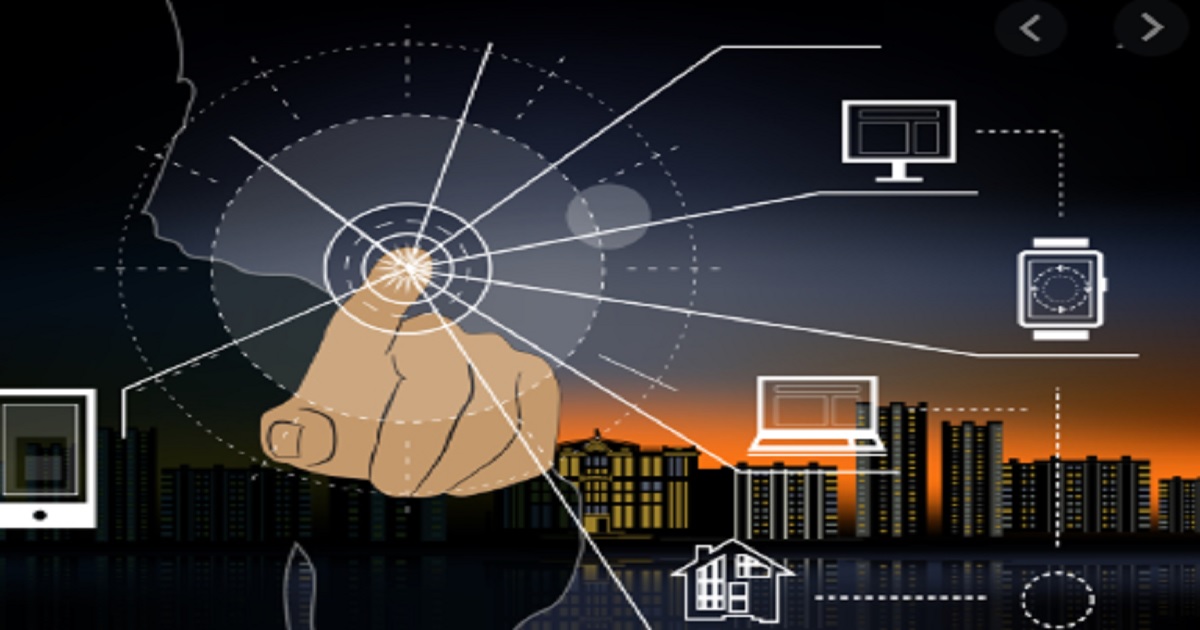
IoT Security
Article | July 5, 2023
Enhancing IoT security: Unveiling the significance of penetration testing in securing real-world IoT applications, identifying vulnerabilities, and mitigating risks for the protection of IoT data.
Contents
1. Introduction to IoT Application Security and Penetration Testing
1.1 Vulnerabilities of IoT application security
2. Fundamentals of IoT Penetration Testing
3. Considerations for IoT Penetration Testing
4. Methodologies and Approaches for IoT Penetration Testing
5. Takeaway
1. Introduction to IoT Application Security and Penetration Testing
Securing real-world IoT applications is paramount as the Internet of Things (IoT) permeates various aspects of any individuals lives. Penetration testing serves as a vital tool in identifying vulnerabilities and assessing the resilience of IoT systems against cyber threats. In this article, delve into the significance of penetration testing in securing IoT applications, exploring its role in identifying weaknesses, mitigating risks, and ensuring the integrity and confidentiality of IoT data.
1.1 Vulnerabilities of IoT application security
Expanded Attack Surface: The proliferation of IoT devices has dramatically expanded the attack surface, increasing the potential for security breach enterprise networks. With billions of interconnected devices, each presenting a potential vulnerability, the risk of unauthorized access, data breaches, and other security incidents is significantly heightened.
Risks: IoT devices often possess limited computational resources, making them susceptible to software and firmware vulnerabilities. Their resource-constrained nature can limit the implementation of robust security measures, leaving them exposed to potential attacks. Furthermore, a significant concern is the prevalence of default or weak credentials on these devices.
Diverse Threat Landscape: The threat landscape surrounding IoT devices is extensive and ever-evolving. It encompasses various attack vectors, including malware, botnets, DDoS attacks, physical tampering, and data privacy breaches. One notable example is the Mirai botnet, which compromised a vast number of IoT devices to launch large-scale DDoS attacks, leading to significant disruptions in internet services. In addition, IoT devices can serve as entry points for infiltrating larger networks and systems, allowing attackers to pivot and gain control over critical infrastructure.
Botnets: IoT devices can be infected with malware and become part of a botnet, which can be used for various malicious activities. Botnets are often utilized to launch distributed denial-of-service (DDoS) attacks, where a network of compromised devices overwhelms a target system with traffic, causing it to become inaccessible.
Ransomware: IoT devices are also vulnerable to ransomware attacks. Ransomware is malicious software that encrypts the data on a device and demands a ransom payment in exchange for the decryption key.
Data Breaches: IoT devices can be targeted to steal sensitive data, including personal identifiable information (PII) or financial data. Due to inadequate security measures, such as weak authentication or unencrypted data transmissions, attackers can exploit IoT devices as entry points to gain unauthorized access to networks and systems.
2. Fundamentals of IoT Penetration Testing
IoT penetration testing, also known as ethical hacking or security assessment, is a critical process for testing and identifying vulnerabilities and assessing the security posture of IoT devices, networks, and applications. It involves simulating real-world attacks to uncover weaknesses and provide insights for remediation.
IoT penetration testing involves identifying vulnerabilities, conducting targeted attacks, and evaluating the effectiveness of security controls in IoT systems. IoT pen-testing aims to proactively identify and address potential weaknesses that malicious actors could exploit. The methodology of IoT pen-testing typically follows a structured approach. It begins with attack surface mapping, which involves identifying all potential entry and exit points that an attacker could leverage within the IoT solution. This step is crucial for understanding the system's architecture and potential vulnerabilities. Pentesters spend considerable time gathering information, studying device documentation, analyzing communication protocols, and assessing the device's hardware and software components.
Once the attack surface is mapped, the following steps involve vulnerability identification and exploitation. This includes conducting security tests, exploiting vulnerabilities, and evaluating the system's resilience to attacks. The penetration testers simulate real-world attack scenarios to assess the device's ability to withstand threats. After exploitation, post-exploitation activities are performed to determine the extent of the compromise and evaluate the potential impact on the device and the overall IoT ecosystem. Finally, a detailed technical report summarizes the findings, vulnerabilities, and recommendations for improving the device's security.
3. Considerations for IoT Penetration Testing
Fuzzing and Protocol Reverse Engineering: Employ advanced techniques like fuzzing to identify vulnerabilities in communication protocols used by IoT devices. Fuzzing involves sending malformed or unexpected data to inputs and analyzing the system's response to uncover potential weaknesses.
Radio Frequency (RF) Analysis: Perform RF analysis to identify weaknesses in wireless communication between IoT devices. This includes analyzing RF signals, monitoring wireless communication protocols, and identifying potential vulnerabilities such as replay attacks or unauthorized signal interception.
Red Team Exercises: Conduct red team exercises to simulate real-world attack scenarios and evaluate the organization's detection and response capabilities. Red team exercises go beyond traditional penetration testing by emulating the actions and techniques of skilled attackers. This helps uncover any weaknesses in incident response, detection, and mitigation processes related to IoT security incidents.
Embedded System Analysis: Gain expertise in analyzing and reverse engineering embedded systems commonly found in IoT devices. This includes understanding microcontrollers, debugging interfaces, firmware extraction techniques, and analyzing the device's hardware architecture. Embedded system analysis helps identify low-level vulnerabilities and potential attack vectors.
Zero-Day Vulnerability Research: Engage in zero-day vulnerability research to identify previously unknown vulnerabilities in IoT devices and associated software. This requires advanced skills in vulnerability discovery, exploit development, and the ability to responsibly disclose vulnerabilities to vendors.
4. Methodologies and Approaches for IoT Penetration Testing
Mobile, Web and Cloud Application Testing
Mobile, web, and cloud application testing is integral to IoT penetration testing, focusing on assessing the security of applications that interact with IoT devices. This methodology involves various steps to evaluate the security of these applications across different platforms. For mobile applications, the methodology includes reviewing the binary code, conducting reverse engineering to understand the inner workings, and analyzing the file system structure. Sensitive information such as keys and certificates embedded within the mobile app are scrutinized for secure storage and handling. The assessment extends to examining the application's resistance to unauthorized modifications. In web applications, the testing covers common vulnerabilities like cross-site scripting (XSS), insecure direct object references (IDOR), and injection attacks. Application reversing techniques are employed to gain insights into the application's logic and potential vulnerabilities. Additionally, hardcoded API keys are identified and assessed for their security implications.
Firmware Penetration Testing
Firmware penetration testing is a crucial aspect of IoT security assessments, aiming to identify vulnerabilities within the firmware running on IoT devices. The methodology encompasses multiple steps to uncover weaknesses. The process begins with binary analysis, dissecting the firmware to understand its structure, functionality, and potential vulnerabilities. Reverse engineering techniques are applied to gain deeper insights into the firmware's inner workings, exposing potential weaknesses like hardcoded credentials or hidden functionality. The analysis extends to examining different file systems used in the firmware and evaluating their configurations and permissions. Sensitive keys, certificates, and cryptographic material embedded within the firmware are scrutinized for secure generation, storage, and utilization. Additionally, the resistance of the firmware to unauthorized modification is assessed, including integrity checks, secure boot mechanisms, and firmware update processes.
IoT Device Hardware Pentest
IoT device hardware penetration testing involves a systematic methodology to assess the security of IoT devices at the hardware level. This comprehensive approach aims to identify vulnerabilities and weaknesses that attackers could exploit. The methodology includes analyzing internal communication protocols like UART, I2C, and SPI to understand potential attack vectors. Open ports are examined to evaluate the security controls and risks associated with communication interfaces. The JTAG debugging interface is explored to gain low-level access and assess the device's resistance to unauthorized access. Extracting firmware from EEPROM or FLASH memory allows testers to analyze the code, configurations, and security controls. Physical tampering attempts are made to evaluate the effectiveness of the device's physical security measures.
5. Takeaway
Penetration testing is crucial in securing real-world IoT applications, enabling organizations to identify vulnerabilities and mitigate risks effectively. By conducting comprehensive and regular penetration tests, organizations can proactively identify and address security weaknesses, ensuring the integrity and confidentiality of IoT data. With the ever-growing threat landscape and increasing reliance on IoT technologies, penetration testing has become indispensable to safeguard IoT applications and protect against potential cyber-attacks.
Several key factors will shape the future of IoT penetration testing. First, the increasing complexity of IoT systems will require testing methodologies to adapt and assess intricate architectures, diverse protocols, and a wide range of devices. Second, there will be a greater emphasis on security by design, with penetration testing focusing on verifying secure coding practices, robust access controls, and secure communication protocols. Third, supply chain security will become crucial, necessitating penetration testing to assess the security measures implemented by vendors, third-party components, and firmware updates. Fourth, integrating IoT penetration testing with DevSecOps practices will ensure continuous monitoring and improvement of IoT system security. Lastly, as attackers become more sophisticated, future IoT penetration testing methodologies will need to keep pace with evolving IoT-specific attack techniques. By embracing these advancements, IoT penetration testing will play a vital role in ensuring the security and privacy of IoT deployments.
Read More

IoT Security
Article | October 11, 2023
The concept of "never trust, always verify" is the foundation of the relatively new security architecture known as "zero trust." Zero trust requires that all users and devices be verified every time they connect, even from inside the "moat," in contrast to the conventional castle-and-moat security architecture, which automatically trusts users and devices located within a network's perimeter.
Companies are being forced to reconsider how they safeguard their networks by the internet of things (IoT). Unmanaged smart gadgets connected to the internet expand the number of potential access points for hackers to compromise your security when they are added to a network.
Zero Trust Security Expansion for IoT
After establishing it for users and their devices, organizations must extend zero-trust security to cover unmanaged, non-user devices too. To do this, they require zero trust identity management technologies that automatically register devices, issue credentials, and offer password-less authentication.
Device Visibility
A device may be infected with malware or have a security breach if performance problems or bugs start to appear frequently. In addition, a malfunctioning device may be more vulnerable to attack. Therefore, organizations require device health monitoring that can automatically identify problems and flag them for remedy in order to establish and maintain zero trust security for IoT. Some cutting-edge solutions can also automatically prevent an impacted device from making further connection attempts or carrying out corrective actions without requiring human participation.
The Principle of Least Privilege (PoLP)
The principle of least privilege (PoLP), which argues that any user or device should only obtain the bare minimum access privileges necessary to perform their job functions, is widely used in conjunction with zero trust security. Therefore, organizations must establish the minimal level of network access required for each device to carry out its functions before limiting its potential privileges in order to deploy PoLP for IoT. Implementing identity and access management (IAM) tools and guidelines that support zero trust and PoLP for devices is one approach to accomplishing this.
Security Monitoring
There are other zero-trust security monitoring programs created especially for IoT, such as Palo Alto Networks' IoT Security, which was previously discussed. Businesses can also utilize tools to monitor devices and network traffic, such as next-generation firewalls and intrusion detection and prevention systems (IDS/IPS). The zero trust security solution for IoT must include monitoring in addition to as much automation as possible so that threats can be identified, contained, and remedied even when no one is there to press a button or disconnect a device manually.
One of the leading causes of zero trust security projects failing over time is that people stop adhering to them once they get complicated. This is especially true for IoT security that operates on zero trust. In addition, it can be logistically challenging to keep remote, unmanaged devices at zero trust.
Read More

IoT Security
Article | June 27, 2023
Learn more about IoT data protocols and what makes them essential for a cohesive IoT ecosystem. This article will provide a detailed view of data protocols and their importance for modern businesses.
1 Significance of IoT Data Protocols for Business Operations
IoT ecosystems form an integral part of many businesses today, and IoT data protocols serve as the foundation for seamless communication and data exchange between connected devices. IoT protocols ensure the integrity and reliability of data, empowering businesses to make informed decisions, optimize operations, enhance productivity, and drive innovation. With standardized and secure IoT protocols and standards, companies can achieve efficient data transmission and allow for scalability across diverse IoT ecosystems. Understanding and leveraging the right protocols is essential for businesses to benefit from the full potential of their IoT investments and gain a competitive edge in today's interconnected world.
2 Understanding IoT Data Protocols
IoT data protocols are standardized rules and formats that ensure efficient and secure data transmission for efficient IoT communication. By adhering to established protocols such as MQTT, CoAP, and AMQP, businesses can maintain interoperability, scalability, and robust data transmission of IoT data, ensuring efficient data storage and management for their IoT ecosystem. This, in turn, empowers organizations to monitor and control critical processes in real-time and make informed decisions.
2.1 Role of IoT Data Protocols in the IoT Ecosystem
The seamless functioning of an organization's IoT ecosystem relies on the pivotal role played by IoT data protocols. These protocols, serving as the communication backbone, enable secure transfer and efficient data processing, thereby facilitating the seamless exchange of information within the IoT network. Consequently, businesses operating within the IoT sphere can harness the power of reliable data communication enabled by these protocols to unlock insights that drive innovation. IoT data protocols serve as the vital link that fuels the interconnected landscape of IoT devices, elevating the efficiency and efficacy of businesses as they navigate the complex web of IoT technologies and leverage its immense potential.
2.2 Overview of Common IoT Data Protocols
The IoT data protocols come with their own set of applications and challenges. Understanding each protocol's individual use cases will help businesses set up and scale their IoT device ecosystems.
MQTT (Message Queuing Telemetry Transport): MQTT is a lightweight and efficient protocol designed for low-power devices and unreliable networks. It uses a publish-subscribe model, making it ideal for IoT applications where bandwidth and power consumption are crucial factors, such as remote monitoring and control systems.
CoAP (Constrained Application Protocol): For resource-constrained IoT devices, CoAP is designed to enable smooth communication over the Internet. It uses a client-server model and is suitable for IoT applications where devices have limited processing power and memory, such as smart home automation, environmental monitoring, and healthcare systems.
HTTP (Hypertext Transfer Protocol): Although primarily designed for web applications, HTTP is also used in IoT systems for data transmission. The ubiquity and familiarity of HTTP make it a widely supported communication protocol. As a result, it is suitable for IoT devices that require high-level interoperability in applications that involve cloud integration, data analytics, and web-based control interfaces.
AMQP (Advanced Message Queuing Protocol): AMQP is a flexible messaging protocol ensuring reliable, secure, and interoperable communication between IoT devices and back-end systems. It supports both publish-subscribe and point-to-point messaging models, making it suitable for IoT scenarios involving complex routing, large-scale deployments, and enterprise integrations.
Zigbee: Zigbee is a wireless protocol designed specifically for low-power, short-range communication in IoT networks. It operates on the IEEE 802.15.4 standard and is known for its energy efficiency and mesh networking capabilities, leading to its widespread adoption in home automation, intelligent lighting, and industrial control systems.
3 Considerations for Choosing the Right IoT Data Protocol
Selecting a suitable IoT data protocol is essential to maintain smooth interoperability and a unified IoT ecosystem. Compatibility with existing infrastructure is crucial for seamless integration and cost-effective implementation. Security measures must also be robust to protect sensitive data from unauthorized access and potential breaches. Additionally, scalable and flexible data protocols in IoT are vital to accommodate future growth and evolving business requirements. Furthermore, the protocol's reliability and efficiency in transmitting data should align with the use case of IoT systems. Finally, considering the protocol's industry adoption and standardization level will also help minimize risks and enhance interoperability.
4 In Summary
IoT data protocols play a significant role in facilitating efficient and secure business operations within the IoT ecosystem. By learning more about the use cases of the most common protocols in the industry, businesses can consider factors such as compatibility, security, scalability, and reliability while choosing the most suitable option for their business. As IoT systems grow, more complex and reliable data protocols will emerge, paving the way for enhanced connectivity, interoperability, and transformative opportunities across various industries.
Read More

Article | April 14, 2020
The survey data I’m referring to comes from a study conducted by the Eclipse Foundation about the adoption of commercial Internet of Things (IoT) technology. The aim of the study was to get a better understanding of the IoT industry landscape by identifying the requirements, priorities, and challenges faced by organizations deploying and using commercial IoT technologies. More than 350 respondents from multiple industries responded, with about a quarter of respondents coming from industrial production businesses. While this survey was not solely focused on the manufacturing and processing industries, its results reflect the general business community’s IoT adoption at the end of 2019. As such, it is a pre-COVID-19 snapshot of IoT adoption.
Read More